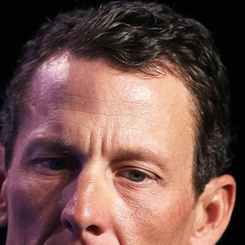As November 6th approaches, media outlets are ramping up their reporting on what’s being called a close race. Did Obama’s lackluster performance during the first presidential debate begin to tip the scales in favor of Romney and can he redeem himself in the second debate this afternoon? Despite the evident tension surrounding subjects like the jobs report, health care and foreign policy, both the democratic and republican campaigns know a lot more about the public’s voting intentions than one might think.
According to ESSEC’s Arnaud De Bruyn, data being collected form voters regarding their values and voting history can reveal a great deal about voting tendencies. Ultimately, this can allow analysts to predict election outcomes with relative certainty and leverage findings by targeting swing voters to provoke a desired outcome.
“There are a multitude of indicators that tell politicians how you will vote on Election Day or if you still need convincing,” explains professor De Bruyn. “Identifying swing voters is key to confirming a lead or making up a deficit. And while Governor Romney and President Obama have formidable campaigning budgets at their disposal, every cent counts and moneys are undoubtedly best spent on targeted campaigns.”
Leveraging Big Data to Target Swing Voters
Just as a chain super market might use information about your shopping habits to send you targeted coupons, the Obama and Romney campaigns are using what they know about American voters to target their messaging and speak to those constituents whose will have an impact. And they know more about you then you might think.
The most obvious starting point in the getting-to-know-you process is the survey. “Large surveys in the United States are designed to find out what we call Deep Needs. Surveys include questions about an individual’s beliefs, values,” Professor De Bruyn goes on to explain. “What do you envision for the future? How do you define success? What are the assets you will need to achieve this success? These are the types of questions that let analysts access a series of keywords associated to these Deep Needs: Family, financial security, community respect, business success, the environment, opportunities, children etc.”
“For example, extending opportunities to others are textbook keywords for democrats whereas defending righteousness is pure-blood republican. These groups don’t matter as much to the Obama and Romney campaigns because they’ve more or less already chosen their camps. Swing voters, on the other hand, are essential to the outcome. They can be identified by key phrases like working with the community, achieving independence, or focusing on family.”
But it’s more than just what you say in a survey. Political campaign leaders also access vast amounts of data on American purchasing behavior and cross reference this with voting history to learn more about specific groups. A discriminant analysis of this data will tell analysts what they need to know about your political affiliations. “You are more likely to be a Democrat if you have a cat, eat sushi and own an Apple computer for example,” he adds. “Republicans, on the other hand, are more likely to have a dog, drive a Pontiac, own a gun and go to church.”
Social media also has a new role in this. In 2008, Barack Obama made social media a big part of his campaign. Today data mined from these same platforms is being used to new ends, to better identify those key swing voters.
Targeting messages based on this kind of data mining is a perfect example of how political campaigns are more and more apt to use marketing analytic tools – the same tools that allow marketers to target a specific group of consumers.
“There are some relatively new ways – that is to say they’ve come into use in the past 15 years – that politicians are using marketing analytics to decode and target voter attitudes,” explains Professor De Bruyn. “The first is political mapping. By looking at past election results and cross referencing these with behavioral data, analysts can map, street by street, and with extreme precision the voting tendencies of residence. And the ways in which neighborhoods are cut up is very precise; more affluent streets are never lumped in with less affluent so that regroupings are kept as homogeneous as possible. Even if they vote in the same offices, data is not collected in the same way.”
“Suppose you have a tight race in the eastern district of North Carolina,” explains professor De Bruyn. “Campaign leaders today have the ability to buy the addresses of 20,000 people in that region who are likely to belong to the working with the community segment, that is to say, a prime swing voter group. They can target messaging by mail, or posted advertising addressing the issue. They could even find out that this segment tends to watch a certain TV channel or program and buy TV spots during these programs. The possibilities are endless.”
Obama or Romney? The not-so-secret ballot
As the election approaches, big data mining is taking out a lot of the guesswork about November’s results. Professor De Bruyn would go so far as to say that these tools are nearly as effective as infiltrating the secrecy of the voting booth: “We can understand the deep needs and voting history of a given neighborhood and politicians have access to very precise data.”
This fact is even truer in French runoff elections. Analysts can look at results from the first round of voting and can more or less identify who will come out on top in the second round. “In this case we’re talking about the real actions of voters and not just voting intention. This makes the analysis extremely precise.
Pundits jumped on Obama’s lackluster performance at the first presidential debate to proclaim the race was still wide open. Indeed, while the effectiveness of targeted messaging is less certain, we must remember it is easier than ever for both camps to identify those pivotal swing voters – thanks to “deep needs" surveying, geolocalization of past elections, discriminant analysis – and reach them with precision through big databases, targeted TV spots, direct mailing and more.









